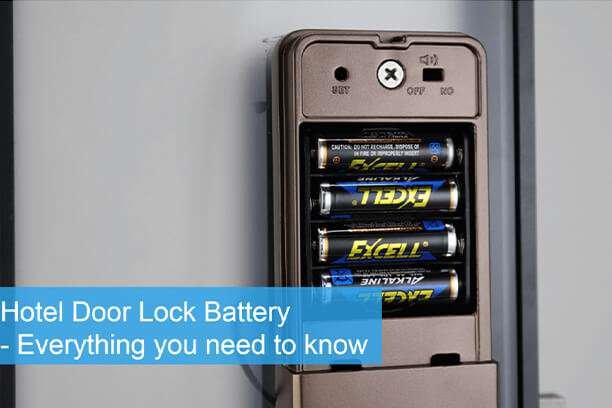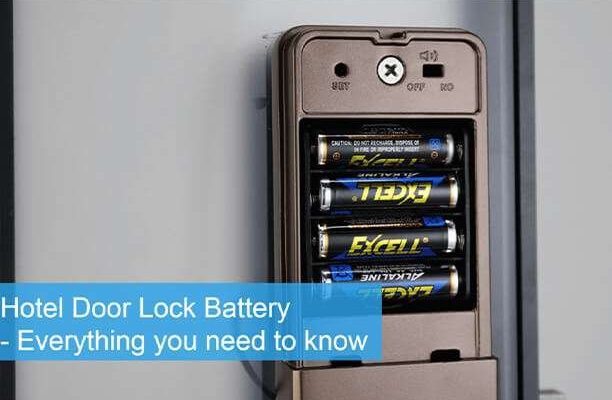
The thing is, “low power” alerts aren’t always as simple as dead batteries. Sometimes, you pop in fresh batteries and the warning just keeps coming back, making you question your sanity (and maybe your ability to read battery packaging). So, what’s really going on? Let me walk you through the common reasons behind these battery issues, why your smart lock might be stuck in a “low power” loop, and what you can do—step by step—to fix it for good.
What Does a “Low Power” Warning on a Smart Lock Actually Mean?
First off, “low power” means the lock senses its batteries can’t keep running the motor and electronics reliably. Most smart locks, like those from August or Yale, constantly check battery voltage. When voltage drops below a certain point, the lock throws up a warning—sometimes as an app notification, other times with a blinking light, or a beeping chime.
But here’s the thing: it’s not always just about the battery. You might be wondering, “Why is my brand-new battery not solving this?” Sometimes, the warning means there’s too much resistance in the lock’s mechanism or there are issues with battery contacts. Other times, a software glitch keeps showing the alert even after your fresh battery install. So, a “low power” message is your lock’s way of saying, “Hey, I’m struggling,” not always, “Hey, I need AAAs now.”
If you don’t act on these warnings, your lock might lag, fail to operate remotely, or even lock you out. That’s why it’s so important to break down what’s triggering the warning—and tackle the real problem, not just swap batteries and hope for the best.
Common Reasons Why the Low Power Warning Won’t Go Away
Even after fresh batteries, that pesky warning can stick around for a bunch of reasons. Here’s where things get interesting (and a little frustrating): smart locks can be touchy about their power supply.
- Wrong battery type: Many people grab cheap, off-brand, or rechargeable batteries. Some locks, like the Schlage Encode, won’t play nicely with rechargeables because their voltage drops off fast, confusing the sensor.
- Dirty or bent battery contacts: Over time, corrosion or gunk builds up on the battery contacts inside the compartment. This blocks electricity, so even new batteries don’t do their job—and the warning keeps blinking.
- Sticky or tight lock mechanism: If your deadbolt is tough to turn, the motor needs more power to work. The lock “thinks” the batteries are weaker than they are, and fires off that low power alert.
- Software bugs or sync issues: Sometimes, the lock’s firmware just gets “stuck.” The warning can stay on even after the real problem is fixed, especially if the lock hasn’t re-synced with its app or hub properly.
Honestly, most people skip straight to replacing batteries, miss the other culprits, and wind up back at square one. If you want that “low power” warning gone for good, you’ll need to check all these angles.
How to Check and Replace Smart Lock Batteries the Right Way
Let me explain—it actually matters how you change the batteries in your smart lock. If you rush, mix brands, or touch the contacts with greasy fingers, you might be setting yourself up for a repeat warning.
- Always use fresh, high-quality alkaline batteries—not lithium or rechargeables, unless your lock specifically says it’s okay.
- Remove the battery cover gently. On most August and Yale locks, you slide or pop off the top. For Schlage, there’s often a small release tab.
- Look at the battery compartment for any greenish or white buildup before inserting new batteries. That’s corrosion—and it needs to go.
- Use a pencil eraser or a cotton swab with a drop of rubbing alcohol to clean the contacts until they look shiny.
- Insert the batteries as shown in the diagram—don’t mix old with new, or different brands.
- Press the reset or pair button if your lock has one (some models need this to “notice” the new power).
Some smart locks—especially those with connected apps—want you to re-sync or reset after a battery change. If the warning hangs around, open your mobile app and look for a way to force a sync, code refresh, or quick setup.
You might be surprised, but lots of “dead” smart locks aren’t actually out of juice—they just lost sync or need a little nudge.
What To Do If The Warning Appears After Battery Replacement
So, you followed all the steps, but your lock is still begging for new batteries. Before you start regretting your purchase, check these next:
- Restart the lock: Remove the batteries, wait a full minute, then put them back in. This soft reset often clears old warnings stuck in memory.
- Check for firmware updates: Open your brand’s app (like Yale Access or August Home) and see if there’s new software ready for download. Updates fix bugs that can cause false warnings.
- Re-pair or re-sync the device: Sometimes, you have to “forget” the lock in your app, and then add it again. This forces the lock and app to re-communicate, clearing old warning messages.
- Inspect door alignment: If your deadbolt rubs or sticks, loosen the mounting screws slightly or adjust the strike plate so the lock moves more freely.
If you still see the warning, open the battery compartment again and double-check the contacts—any sign of rust or acid means you might need new springs, or even a replacement module. Some brands, like Schlage, sell replacement trays if yours is too corroded to salvage.
Smart Lock Battery Troubleshooting: Step-By-Step Checklist
If you want to make sure nothing gets missed, here’s a quick, thorough battery troubleshooting flow—like a checklist you’d get from a friendly support rep:
- Check battery brand and expiration date—never mix and match.
- Clean all contacts before inserting new batteries.
- Reboot the lock by removing and reinserting batteries after one minute.
- Test lock movement manually. If it’s stiff, fix door or strike plate alignment.
- Update your lock’s firmware using the companion app if prompted.
- Consult the manual for hidden reset, sync, or pair button steps, especially for less common brands.
- Look for any signs of water damage or corrosion inside the battery area.
Stuck after that? Some smart locks have customer support lines that can walk you through a deeper reset or may offer a warranty swap if your lock is truly faulty.
Why Does Lock Mechanism Resistance Matter for Power Warnings?
Here’s something a lot of folks overlook: even if your batteries are perfect, a tough-to-turn deadbolt can drain them fast. Imagine trying to crank a rusty door with a weak arm—your lock’s motor is in the same boat.
When you install a smart lock on a door that needs pushing, pulling, or lifting to engage the bolt, the motor works harder and draws extra power each time. The lock’s software notices this, sees voltage drops under load, and flashes the “low power” warning.
To fix it:
- Tighten loose door hinges so everything lines up smoothly.
- Slightly adjust the strike plate if the deadbolt rubs.
- Lubricate the bolt (use graphite, not oil, to avoid gumming up the mechanism).
If you adjust your hardware and the warning goes away, you’ve not only solved the power issue—you’ve probably added a few years to your lock’s lifespan.
Comparing Battery Types: What Works Best in Smart Locks?
Not all batteries are created equal, and here’s where a lot of people trip up. Some smart locks, like Yale and August, are picky and only give their best performance with fresh alkaline batteries. Others, such as certain Z-Wave or Zigbee models, might be compatible with lithium batteries—especially in cold climates where alkalines drop voltage faster.
Here’s a quick breakdown:
| Battery Type | Pros | Cons | Recommended For |
| Alkaline (Duracell, Energizer) | Cheap, reliable, steady voltage curve | Drains faster in cold; can leak over time | Most mainstream smart locks |
| Lithium (Energizer Ultimate Lithium) | Long life, good for cold, less leakage | Can confuse some battery meters; higher upfront cost | Outdoor or exposed locks, winter climates |
| Rechargeable (NiMH) | Eco-friendly, reusable | Lower starting voltage, inconsistent performance | Only if manufacturer says it’s okay |
Honestly, unless your manual says otherwise, stick with a major-brand alkaline for the most trouble-free experience.
When To Reset, Pair, or Seek Professional Help
If you’ve replaced batteries, cleaned contacts, updated firmware, and checked the door, but that “low power” alert still won’t quit, it might be time for a deeper reset or repair.
- Factory reset: Many locks have a tiny pinhole or button you can hold for 10+ seconds to return everything to default. You’ll need to re-add codes and pair it with the app afterward.
- Pair with a hub again: If you use home automation (Z-Wave, Zigbee, Apple HomeKit), sometimes disconnecting and then re-adding the device resets its “battery status” memory.
- Contact support: If all else fails, your lock’s support team can walk you through advanced troubleshooting or, if it’s under warranty, arrange a replacement. Don’t be shy—these folks have seen every weird battery warning in the book.
If your lock is less than a year old and still under warranty, don’t mess around with internal repairs. Seek service, or you could void your coverage.
Final Thoughts: Keep Your Smart Lock Happy (and Quiet)
With smart locks, a “low power” warning usually means something’s off—sometimes with the batteries, sometimes with how the lock and door itself work together. The trick isn’t just swapping out batteries, but making sure they’re high quality, the contacts are clean, the lock’s firmware is up to date, and the hardware isn’t sticking or misaligned.
Once you understand why the warning keeps showing up, you can take care of it quickly—without getting stuck in an endless loop of battery changes and mounting frustration. Keep your lock happy, and it’ll keep your door secure without nagging for attention every other week. If all else fails, reach out to your lock’s support team. Sometimes, a quick chat with someone who’s seen it all makes all the difference.
